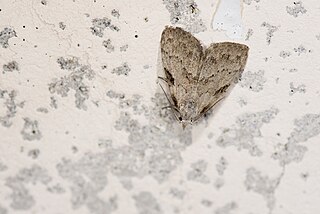Holocraspedon is a genus of moths in the family Erebidae first described by George Hampson in 1893.
Katmeteuoga is a monotypic moth genus in the family Erebidae. Its single species, Katmeteugoa hampsonia, is found on Java. Both the genus and species were first described by van Eecke in 1920.
Lambula is a genus of moths in the family Erebidae. The genus was erected by Francis Walker in 1866.
Malesia is a monotypic moth genus in the subfamily Arctiinae. Its single species, Malesia eugoana, is found on Java and Borneo. Both the genus and species were first described by van Eecke in 1920.
Tortricosia blanda is a species of moth in the subfamily Arctiinae first described by van Eecke in 1926. It is found on Sumatra, Peninsular Malaysia and Borneo.
Oxacme is a genus of moths in the subfamily Arctiinae. The genus was erected by George Hampson in 1894.
Pachycerosia is a genus of moths in the subfamily Arctiinae. The genus was erected by George Hampson in 1900.

Scaptesyle is a genus of moths in the subfamily Arctiinae first described by Francis Walker in 1854.

Manoba is a genus of moths in the family Nolidae. The genus was first described by Francis Walker in 1863.
Stictosia is a genus of moths in the family Erebidae and are common to the geographical region of Borneo.
Tortricosia is a genus of moths in the subfamily Arctiinae.
Elachyophtalma is a genus of moths of the family Bombycidae. The genus was erected by Cajetan Felder in 1861.
Corticomis is a genus of moths of the family Anthelidae first described by Van Eecke in 1924.
Holocraspedon flava is a moth of the family Erebidae. It was described by Rudolf van Eecke in 1927. It is found on Sumatra and possibly on Borneo.
Lambula errata is a moth of the family Erebidae. It was described by van Eecke in 1927. It is found on Sumatra and Borneo. The habitat consists of various lowland forest types.
Cyclosiella spiralis is a moth of the family Erebidae first described by van Eecke in 1926. It is found on Sumatra, Borneo and Peninsular Malaysia. The habitat consists of lowland localities, including dry heath forests, swamp forests and secondary coastal forests.
Stictane is a genus of moths in the family Erebidae erected by George Hampson in 1900.
Stictane umbrata is a moth in the family Erebidae. It was described by van Eecke in 1927. It is found on Sumatra in Indonesia.
Oxacme commota is a moth in the subfamily Arctiinae. It was described by Rudolf van Eecke in 1927. It is found on Sumatra in Indonesia.
Stictosia flava is a moth in the family Erebidae first described by van Eecke in 1927. It is found on Sumatra and Borneo. The habitat consists of lower montane forests.

